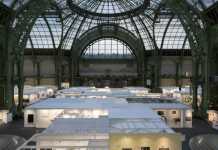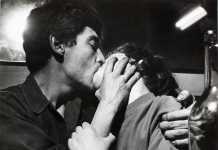A powerful retrospective of Nobuyoshi Araki’s works is currently on view at Musée Guimet. Titled Araki, the show retraces the entirety of artist’s career with over 400 photographs drawn from thousands of photographs taken by him between 1965 and 2016.
“My photos are my diary. Every photo is no more than the representation of a single day. And each day contains the past and the projection into the future. That’s why I feel compelled to indicate the date on every picture I take.” – Araki
PHOTOGRAPHY AS A DIARY
The show starts with an exploration of Araki’s numerous photo books – an attestation to his incessant creative energy as an artist and his diarist approach to photography. His relentless documentation of the daily and the monotonous has often led to his work being classified as a photographic shi-shosetsu (I-novel, a 20th-century genre of Japanese literature where the author narrates his life in first person). Even Araki described shi-shosetsu as ‘the closest thing to photography’.
THEMES
From photographing almost every moment of his life with his wife, muse and model, Yoko to thousands of photographs dedicated to his cat Chiro, along with the monochrome images of Tokyo’s skyscapes and streets, Araki’s impressive body of work is a methodical narration of his life in pictures. Following this idea, Guimet’s exhibition moves along the major recurring themes in Araki’s work, starting with a section dedicated to Araki’s series on flowers that have formed a major subject of artist’s photographs. Sometimes appearing to be innocuously beautiful and sometimes as an obvious metaphoric representation of the female genitalia, Araki’s flowers are also a reminder of his own constant relationship with death and mortality.
The next section of the exhibition, subtitled Sentimental Journey, brings together the seminal series of photographs taken by Araki documenting his honeymoon with wife, Yoko, followed by the later series, Winter Journey, recording his wife’s illness and death in 1990. From the deeply personal images, the exhibition moves to the highly graphic and sexualized series on Kinbaku (literally translating to ‘the beauty of tight binding’) – one of the most prevalent and perhaps most controversial themes in Araki’s work. Provocative pictures of women, naked or clad in exquisite kimonos, bound and suspended in ropes, are often erotic, sometimes mysterious and almost always poetically beautiful.
“What makes [photography] obscene is its terrible cruelty. Happiness may be fleeting, but it’s the reason we go on living. Photography is the joy that precedes pain, the moment of life just before death.” – Araki
Midway through the exhibition, the viewer is led into the artist’s studio, followed by a section dedicated to photographs created by Araki through active manipulation of his negatives or an occasional bold cover up of photographs with calligraphy and paint. The focus then shifts to the monochrome photographs of Tokyo skies taken by Araki from his balcony after the death of his wife and after he was diagnosed with cancer. The exhibition concludes with his latest project Tokyo-Tombeau produced specially for Musée Guimet in 2015.
WHY VISIT?
Often lauded as an artistic genius, sometimes criticised as a misogynist and a pornographer, Araki’s monumental body of work is a genius’ call to celebrate love, life and death for what it is, for all its failings and for all its complexities. And the current exhibition at Musée Guimet successfully manages to capture this beautiful idea through a mesmerising curation of Araki’s works.
PRACTICAL INFORMATION
Where: Musée national des arts asiatiques – Guimet, 6, place d’Iéna, 75116 Paris
Dates: April 13, 2016 to September 5, 2016
Timings: All days except Tuesdays, from 10 am to 6 pm
Tariff: €9.50 (Full), €7-Free (Reduced)
More information: Visit Musée Guimet’s website
















